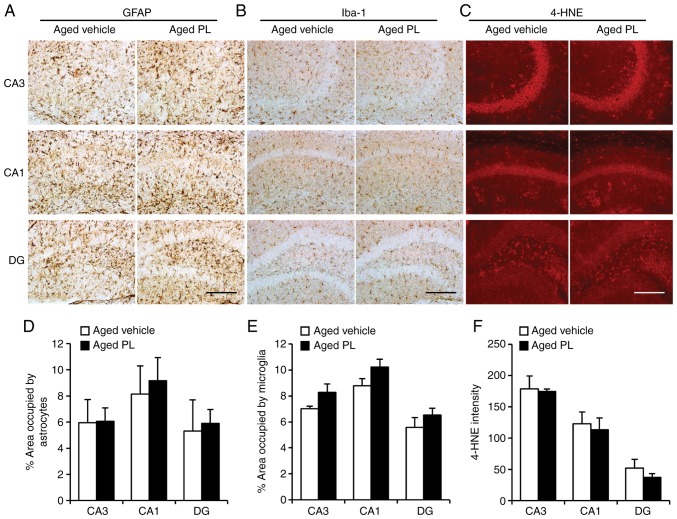Figure 2.
Effect of piperlongumine (PL) on neuroinflammation and oxidative stress in the hippocampus. Activation of microglia and astrocytes was analysed by immunohistochemical staining against glial fibrillary acidic protein (GFAP), ionized calcium binding adaptor molecule 1 (Iba1) and 4-hydroxynonenal (4-HNE), respectively. Images showing (A) GFAP, (B) Iba1, and (C) 4-HNE labelling in the hippocampus of aged mice treated with the vehicle or PL. (D) Percentage area of hippocampus [CA3, CA1 and dentate gyrus (DG)] occupied by astrocytes (thus GFAP labelled; aged vehicle; n=6, aged PL; n=9) in aged mice treated with the vehicle or PL. (E) Percentage area of hippocampus (CA3, CA1, and DG) occupied by microglia (thus Iba-1 labelled; aged vehicle; n=6, aged PL; n=9) in aged mice treated with the vehicle or PL. (F) 4-HNE-intensity in the hippocampus (CA3, CA1, DG) in aged mice treated with the vehicle or PL aged vehicle; n=4, aged PL; n=4). Scale bar, 200 μm. Data are presented as the means ± SEM.

